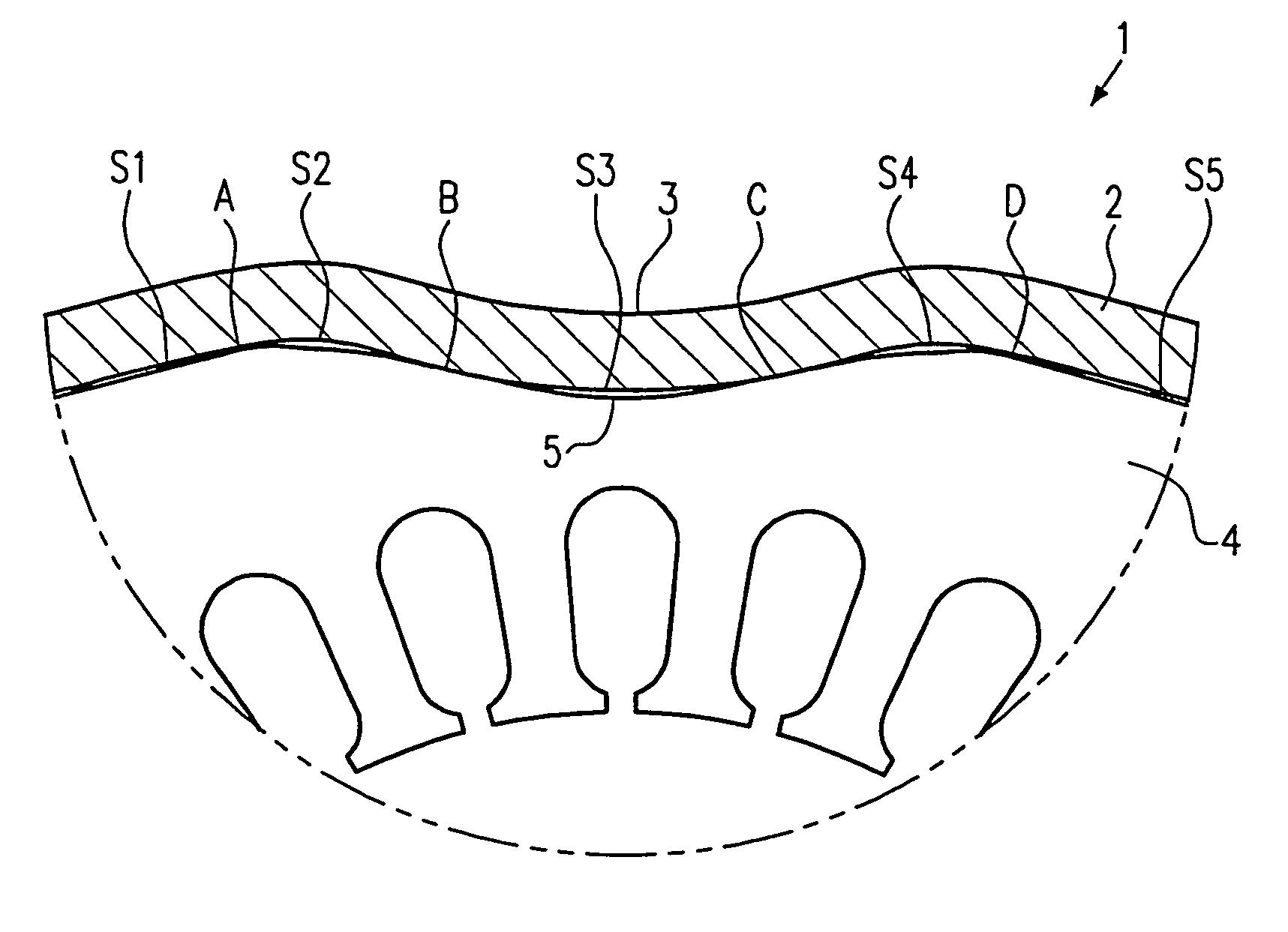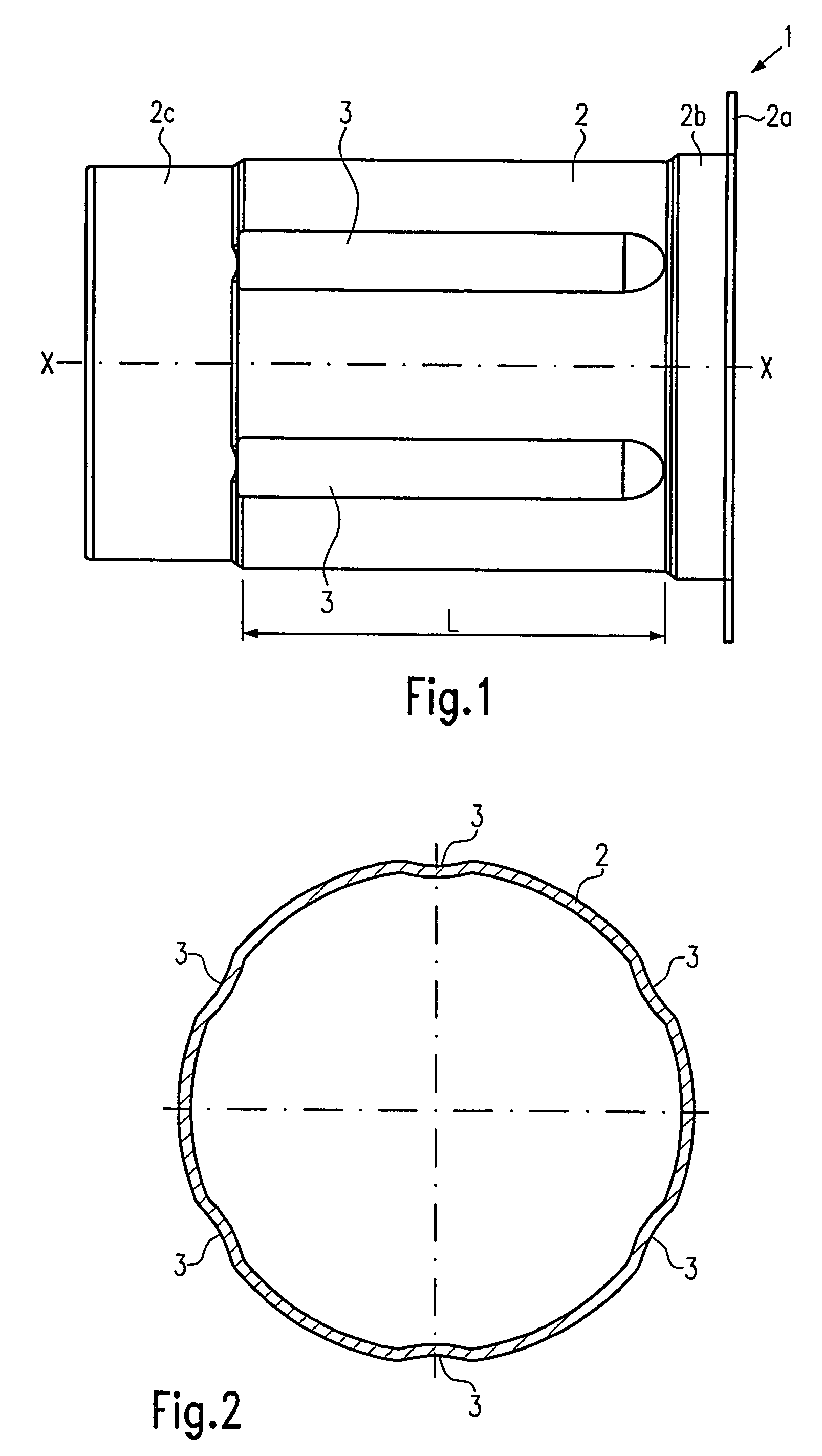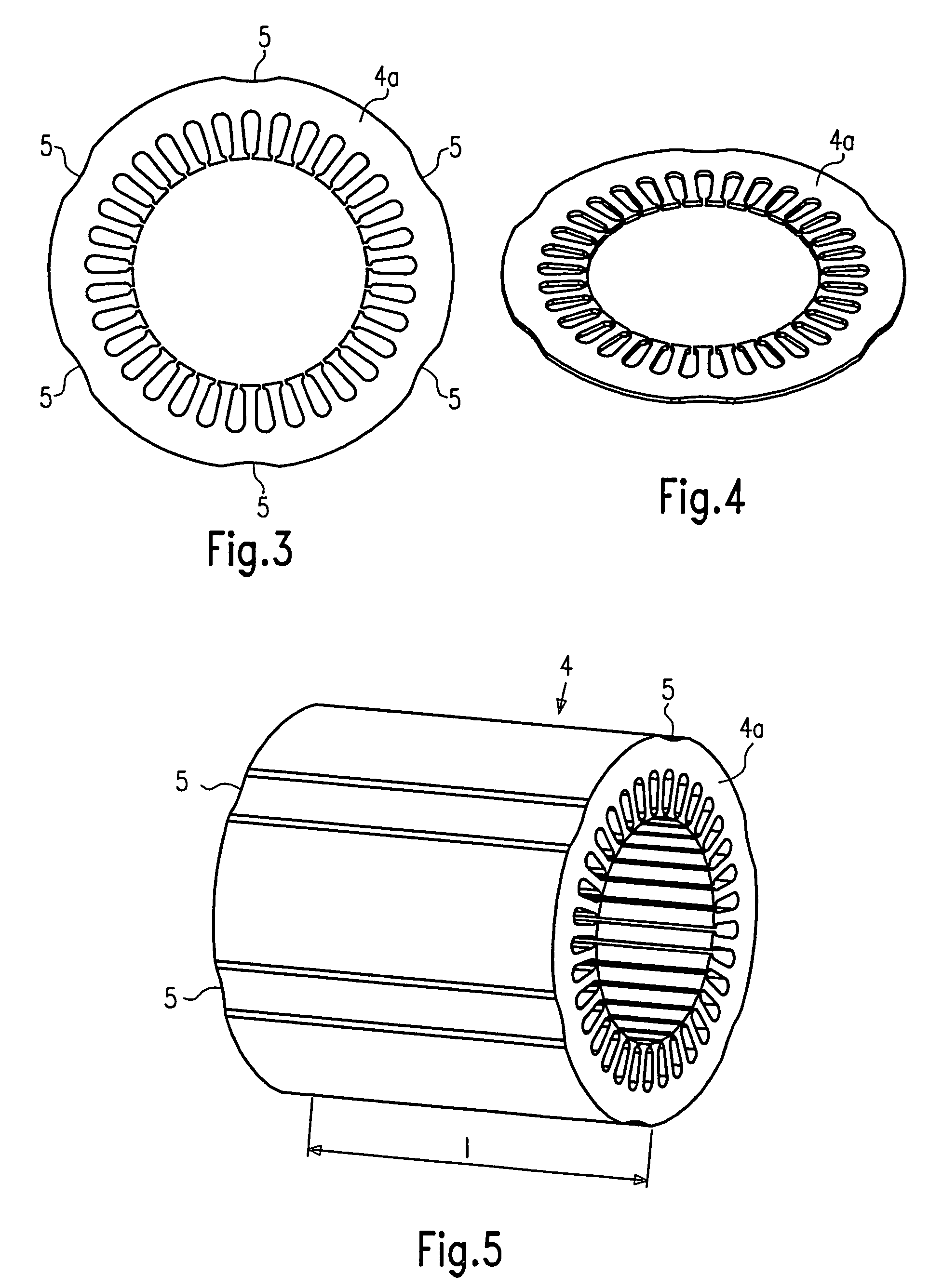Stator assembly for an electrical machine
a stator and electrical machine technology, applied in the field of electric machines, can solve the problems of stator damage, plasticizing of the housing material and damage to the stator, and the creation of chips that cannot always be completely removed, so as to achieve fast and simple connection, special and economical production, and secure connection
- Summary
- Abstract
- Description
- Claims
- Application Information
AI Technical Summary
Benefits of technology
Problems solved by technology
Method used
Image
Examples
Embodiment Construction
[0028]Below, referring to FIGS. 1 through 6, a stator assembly 1 in a first exemplary embodiment of the present invention includes a substantially cylindrical housing 2 and a stator 4.
[0029]FIG. 2 shows a sectional view of the housing 2. In the axial direction X-X, six inward-oriented beads 3 are embodied. The beads 3 are disposed along the circumference of the housing 2, at equal spacings from one another. In the axial direction X-X, the beads 3 have a length L, which corresponds to a length 1 of the stator 4 (see FIGS. 1 and 5). The stator 4 is put together in a known way from many individual stator laminations 4a. As can be seen particularly from FIG. 3, there are likewise six inward-oriented beads or notches 5, spaced equally apart along the circumference, embodied on the outer circumference of each stator lamination 4a.
[0030]FIG. 6 now shows the installed state of the stator lamination packet in the housing 2. The stator laminations are disposed in the housing 2 such that the ...
PUM
 Login to View More
Login to View More Abstract
Description
Claims
Application Information
 Login to View More
Login to View More - R&D
- Intellectual Property
- Life Sciences
- Materials
- Tech Scout
- Unparalleled Data Quality
- Higher Quality Content
- 60% Fewer Hallucinations
Browse by: Latest US Patents, China's latest patents, Technical Efficacy Thesaurus, Application Domain, Technology Topic, Popular Technical Reports.
© 2025 PatSnap. All rights reserved.Legal|Privacy policy|Modern Slavery Act Transparency Statement|Sitemap|About US| Contact US: help@patsnap.com



